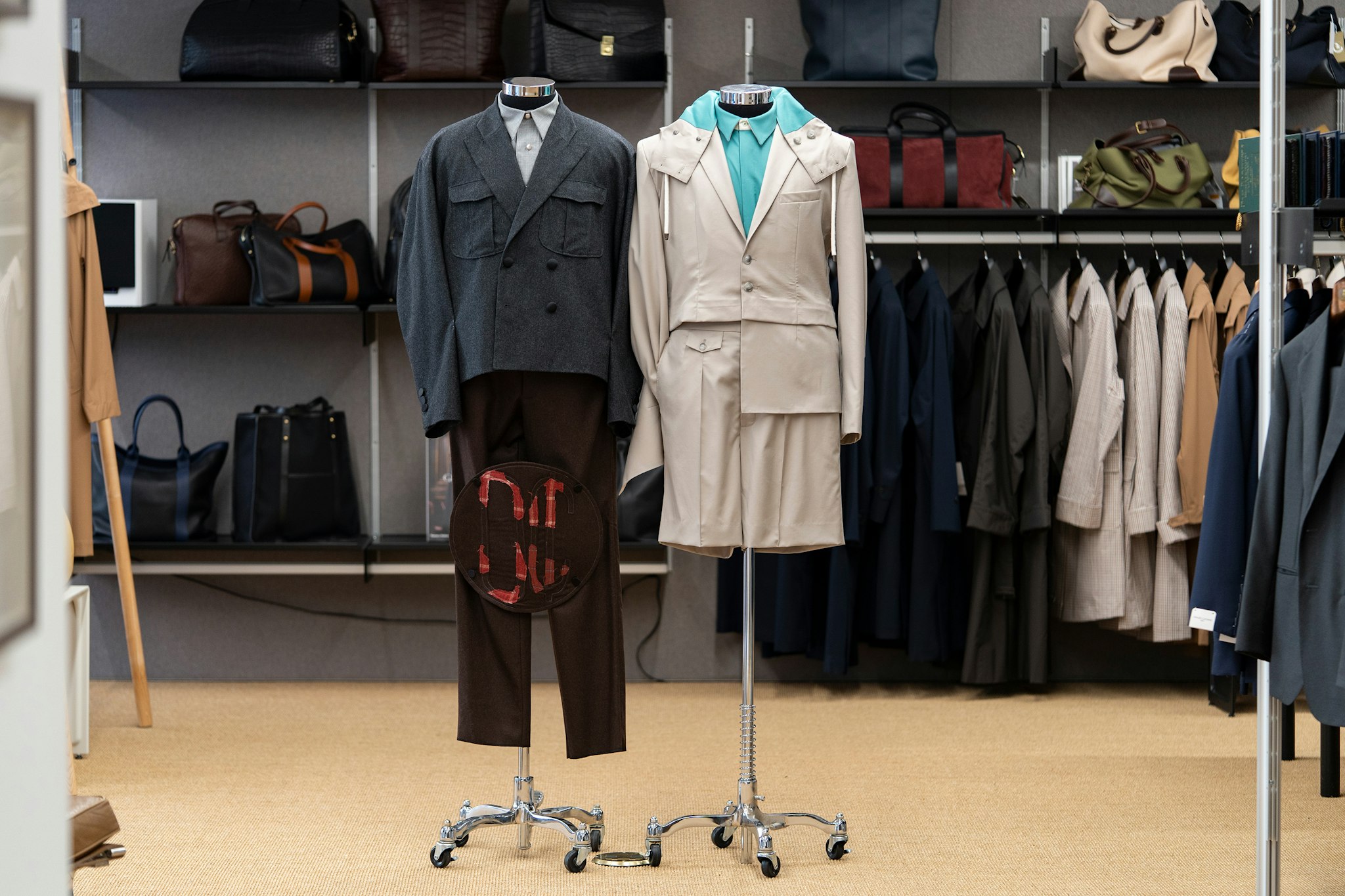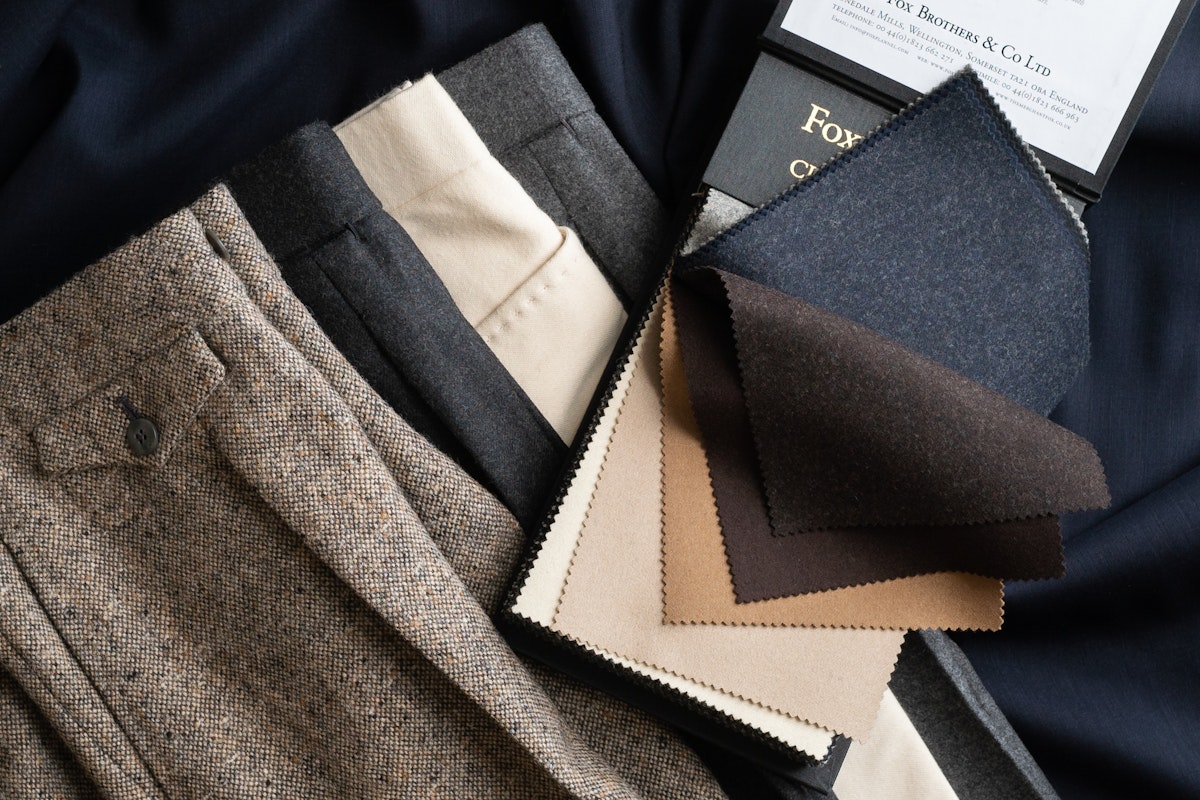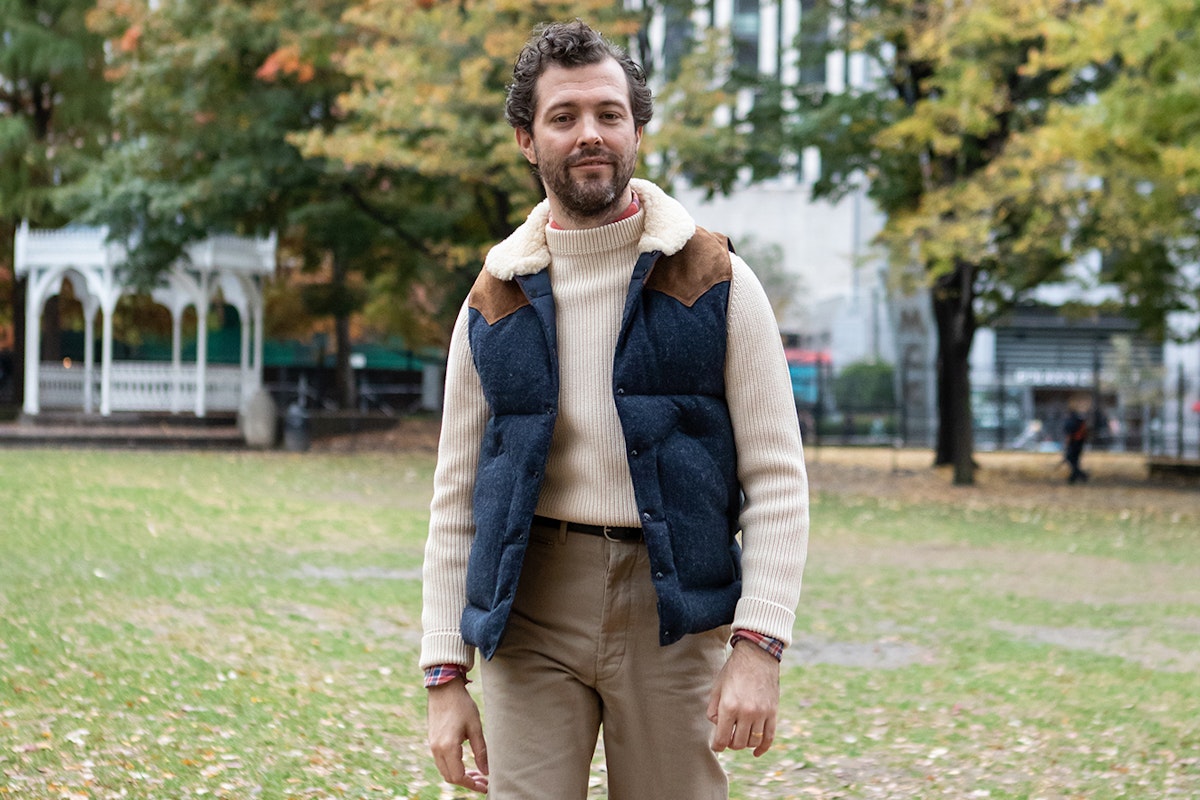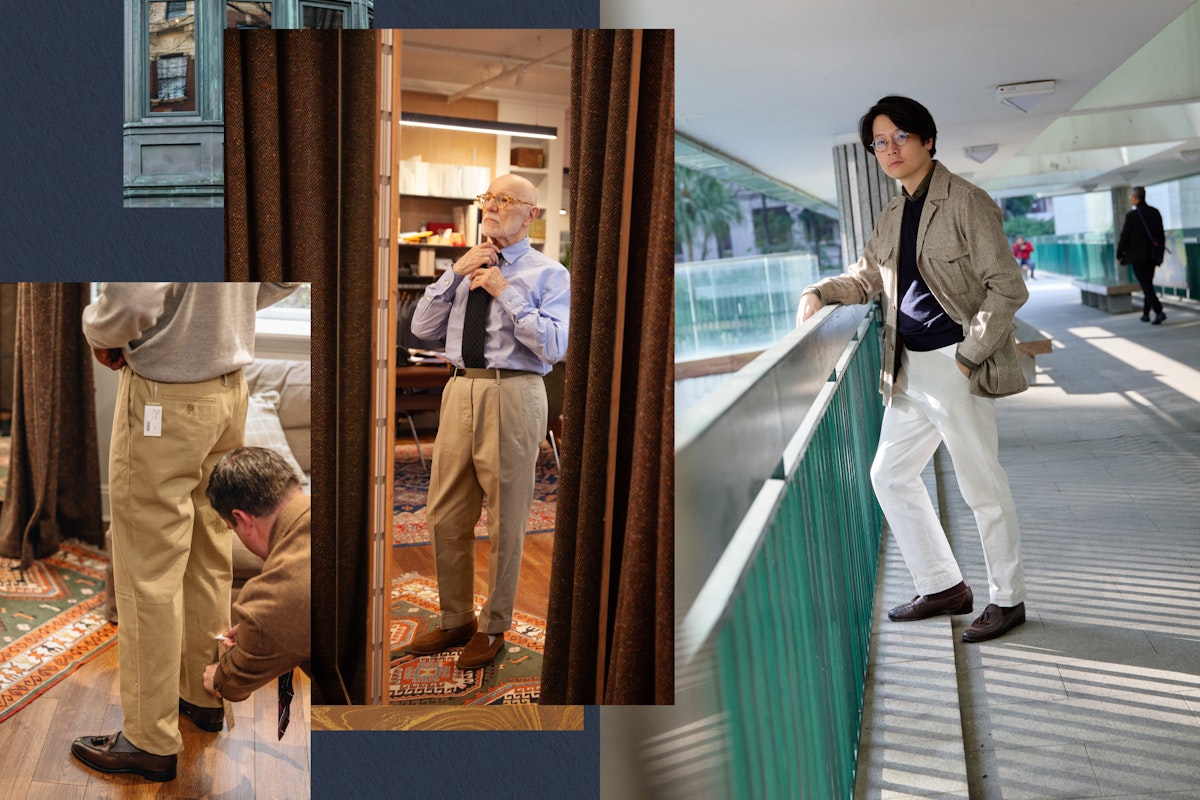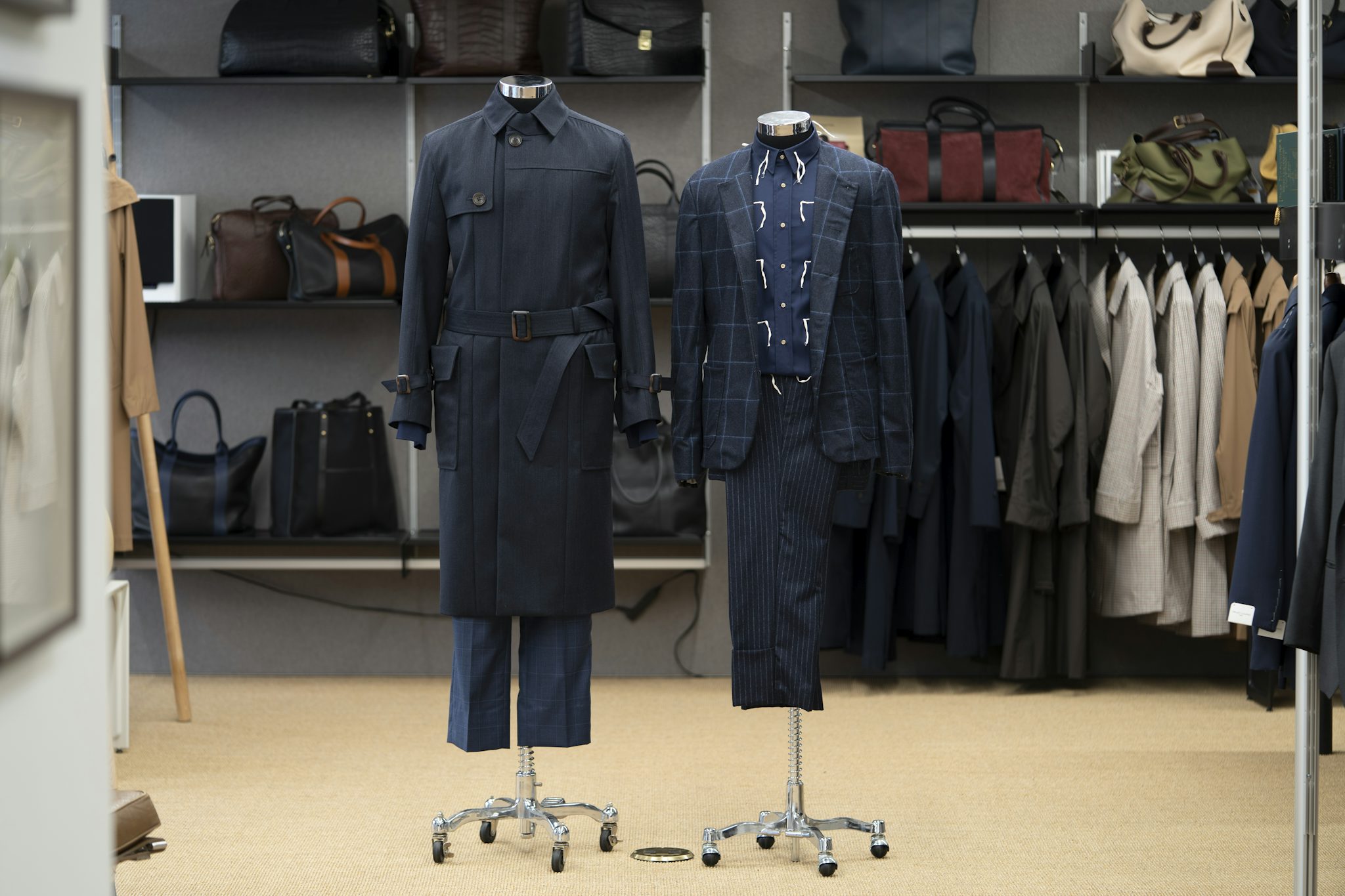
Recent graduates from the Fashion Institute of Technology Menswear Design Club created unique garments using cloth from Vitale Barberis Canonico. After their final pieces went on display at our Westbury shop, we had our friend Bruce Boyer lend his thoughts.
It seems everyone lately has been asking about our post-pandemic future and what will people be wearing? Will we continue wearing the pajamas and terry robes, the cargo shorts and T-shirts, the fleeced and relaxed everything we wore at home when we’re back to the office? Will we now decide to put individual comfort above occasion and traditional decorum? Or will we want to signal our regained freedom to strut our stuff by jumping into tailored clothes and their accessories again? The clothing industry shakes and quivers in neurotic anticipation.
Normally I’m much more comfortable exploring the past than the future, but unique times call for unique thoughts. The Big Fashion magazine September editions were full of the future. And as it happened, I was lazily turning the pages of the Autumn 2020 New York Times Fashion magazine when I came across this slick and punchy editorial headline:
The Time is Now. Nothing is Certain. Change is Here. Fearless Fashion for a New Reality
A new reality? Really? This sounded serious. As it happens, I was also reading at about the same time the perceptive historian Eric Hobsbawm’s study of the 20th Century, Age of Extremes, and my eyes fell upon this pregnant sentence:
Why brilliant fashion designers, a notoriously non-analytic breed, sometimes succeed in anticipating the shape of things to come better than professional predictors, is one of the most obscure questions in history and, for the historian of the arts, one of the most central.
In case you were wondering, Hobsbawm had no answer to this obscure question, but it got me thinking. And then I heard from Mark Cho, co-owner of The Armoury, that the store was going to present the best of Class 2020 men’s clothing designs from the Fashion Institute of Technology students Menswear Design Club fashion project by displaying the outfits in the The Armoury Westbury’s shop windows on Madison Avenue.



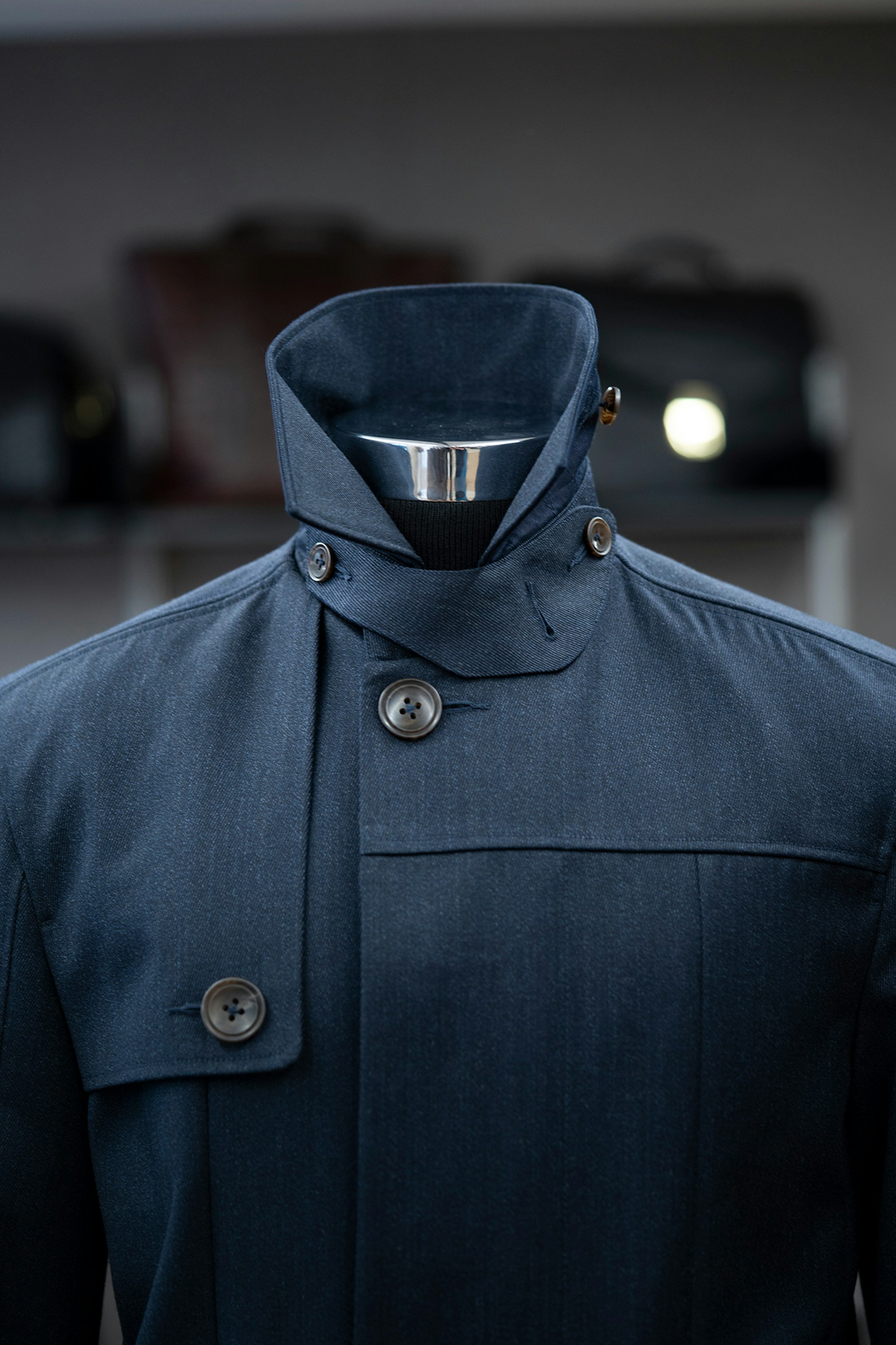

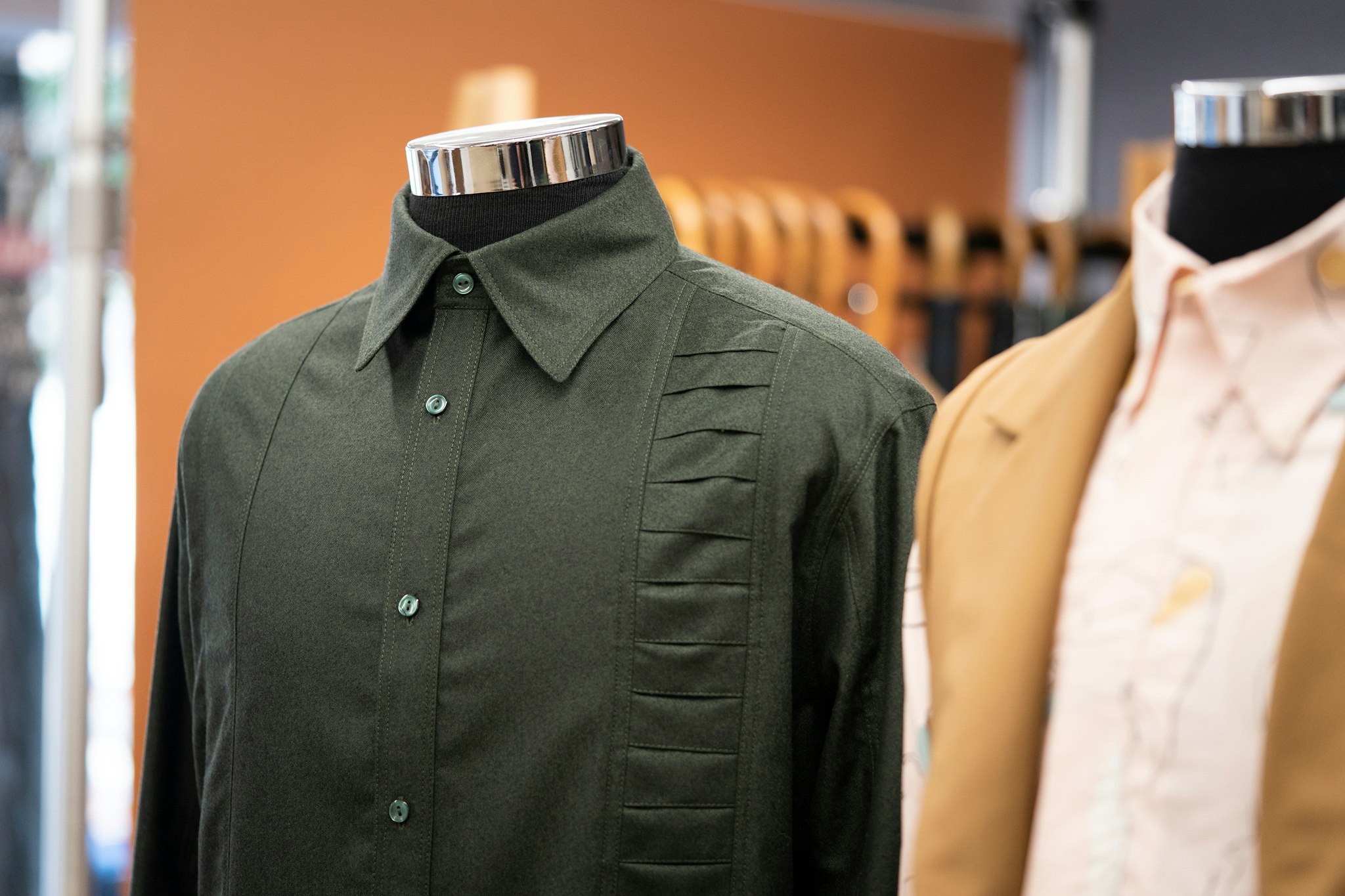
Somehow it all came together for me. I didn’t need Hobsbawm to tell me that this student project might provide a clue to what the future might hold. Good designers are indeed antennas of the zeitgeist – if you’re a professional designer and if you’re not an antenna, you won’t be in the business very long. It occurred to me that these student fashion outfits might well be a possible guide to the future. No one thinks about the future like youth, and maybe here’s where we might find a clue to what’s coming. Why not get in the guessing game like everyone else, I said to myself. While the big global names in Commercial Fashion don’t seem to indicate any interesting prescient creativity that we might consider artistic, I’ve talked with enough beginning designers to think they still have aspirations apart from the commercial. They actually want to express themselves creatively.
There were ten outfits presented, each created and made by a student to represent his own personal aesthetic for a marketable collection. The project was directed by Professor Mark-Evan Blackman. Since FIT was locked down because of the Covid19 pandemic before the garments could be completed there, garments were finished at home by students. The Covid19 pandemic also prevented me from actually examining the garments in person. I had to rely on the designers’ sketches and photos of the clothes as presented. As I said, unusual times call for unusual solutions. I believe the word I’m searching for is iconography.
The clothes were all made from fabrics donated by the renowned Italian mill of Vitale Barberis Canonico, which is the oldest cloth mill in Italy (founded in 1663) and many would argue the best. Their interest in projects like this is wholeheartedly commendable and to be applauded. The designs and workmanship were of course the students own.
My reaction to the outfits as a group was, to me, slightly surprising. I was expecting designs that were perhaps either more inspired by inter-galactic travel or that roughly resembled Japanese agricultural implements. I don’t know why, just my own ignorance and naivety that led me to think that because, in fact, these outfits were neither. I found they were well done and thought out, and the students productions seemed mindful of both tradition and individuality.

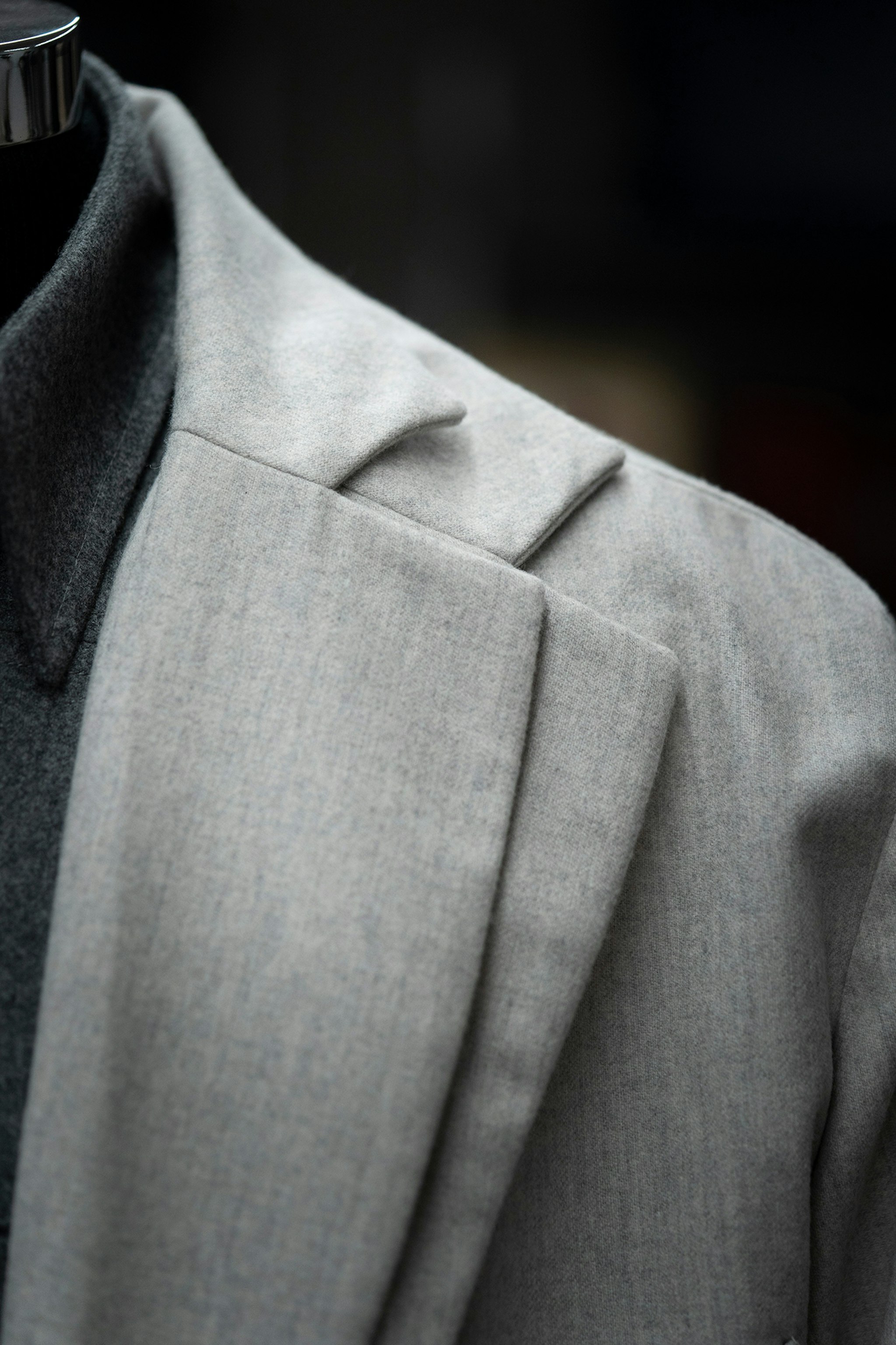

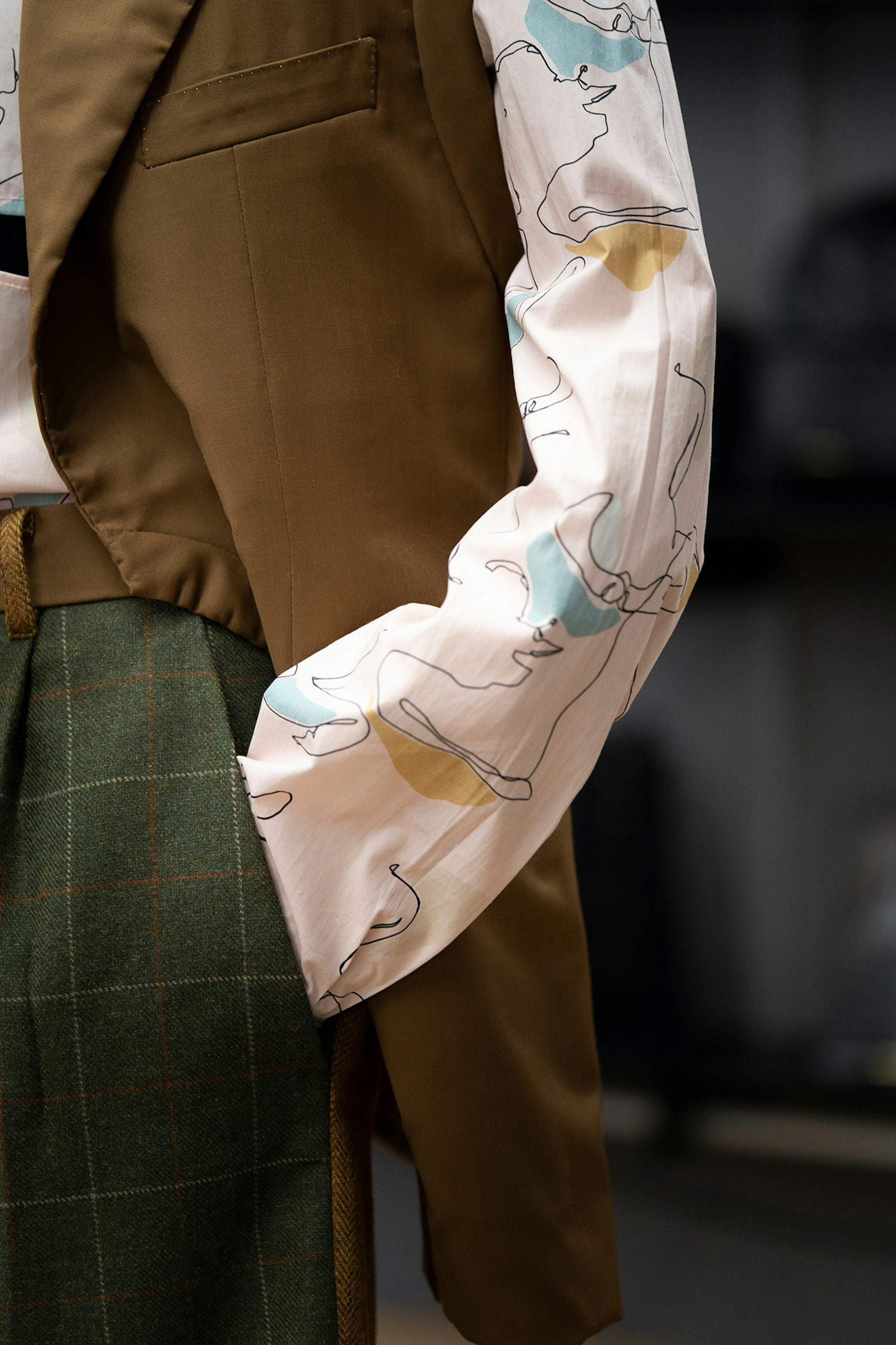
Of the eight outfits, half were comprised of coat, trousers, and shirt, the trifecta of trad men’s wear. One waist-length jacket seemed to recall a 1950's blouson design, another echoed the safari jacket, while still another referred to the classic collarless and lapel less tunics or simple prole jerkins but done in a more sophisticated windowpane patterned city fabric. There was a single-breasted and belted outer coat reminiscent of a trench coat model with the addition of some interesting seam work, and a thigh-length topcoat that for some reason struck me as Neo-Edwardian in flavor.
The remaining outfits took the popular shirt-and-trousers look we’ve become so accustomed to as the basis for experimentation in shape and volume. What particularly struck me was the angularity of the garments, which surprisingly worked well with the neutral palettes of bisque, foggy grey, soft teal, and charcoal. All in all, it struck me as a sophisticated approach to urbane casualness, and that is something to pay attention to.
When a reflected on all this, I became mindful of Anais Nin’s admonition – could she have been referring to literary critics at the time? -- that we don’t see things as they are, we see them as we are. My tastes are somewhat imprisoned by the years of my own youth and I admit to being more and more selective about the realities I accept, but if these student presentations are any indication of the future, the immediate aftermath of the pandemic will be continue the movement of comfort (the great movement in the 20th Century), heightened by a real concern for cosmopolitan polish, and a subtle sense of simplicity, and believe me there’s nothing simple about simplicity in fashion. There was nothing in the baroquely distressed, the blatantly hyper-casual vein, what we’ve come to think of as The Kardashian School. Nor was there any thought of returning to the tight little suits so commanding of the runway a decade ago.
Maybe it’s true what they say, having come through hard times, people tend to veer towards the tried and trusted, towards what we hope may provide a bit of stability. It’s a form of creativity to which we should pay more attention.

